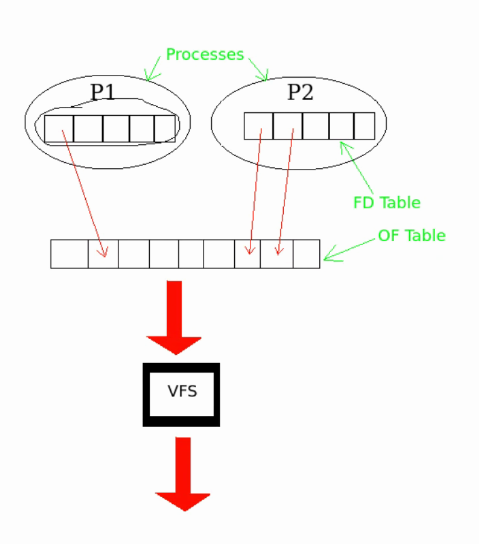Approaching assignment 2
Contents
Check out this page for useful stuff and references: Assignment 2 - Useful Things To Know
Multiprogramming Nature
Assume that multiple programs can be running - which means that synchronisation access of shared resources must be implemented.
Syscalls
In-kernel system call names should be prefixed with sys_
VFS and VOP functions
In this assignment, our scope was the code to only interface system calls to the VFS layer.
No low-level assembly code, disk controller code, file system code [example], etcetera was needed.
Reading and Writing
This means that our read and write functions do not need to do any low level reading, but simply to pass the instructions to the virtual file system functions.
In the assignment, these instructions are passed through the iovec and uio structs, so we could use the below code to initialise them
| |
File Descriptor Table
The file descriptor table is a process-specific map of file descriptor numbers to open file entries.
Our assignment implemented a maximum of OPEN_MAX (128) file descriptors per process.
When a program performs a fork, the file descriptor table is duplicated (shallow copy) and assigned to the fork.
When it comes to synchronous programming, it was advised to have only one lock for the entire table
Open File Table
The open file table is a global table of open file entries, which hold reference to files that are opened in the system. They contain metadata, such as the mode and flags of the file.
They also store a reference count of how many process are dependent on the open file entry.
Each call to open creates a new open file entry though, so this count will usually only be 1, unless a fork or dup2 is executed.
When a file descriptor is closed, the reference count should be decremented.
Only when the reference count is zero, will the open file entry be removed.
Our open file table was implemented as a doubly linked list.

Spinlocks
Spinlocks cause the processor to BUSY-WAIT.
As opposed to usual locks, spinlocks will prevent a thread from sleeping.
Only one spinlock can be acquired at a time!